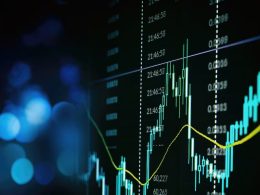by Brian Levitt and Talley Léger, Invesco Canada
As we enter year two of the market recovery, investors face a new set of concerns. Has the economy become too hot, too fast? Are we headed for out-of-control inflation? What are the investment implications of all this?
We tackle these questions, and more, in the latest chapter of our ongoing conversation about the markets and economy.
Talley: It’s hard to believe that a year has passed since the outbreak of the novel coronavirus reached the U.S. And for many, it’s equally astonishing that the broad U.S. stock market has kept pressing to new highs, alongside forceful blasts of central bank liquidity and government stimulus checks.
Brian: If you had told me in March 2020 that the U.S. economy would produce 379,000 jobs in February 2021,1 the 10-year U.S. Treasury yield would be above 1.50%,2 and the 10-year U.S. inflation breakeven rate would be over 2.2%,2 then I would have slept much better over the past year.
Talley: True, we didn’t call those levels precisely. In fairness, however, we did get the direction generally right: Up.
Brian: It’s ironic — in year one of recoveries, investors typically ask, “How can the market be going up when the economy is so bad?” And in year two they ask, “Has the economy become too hot, too fast?” Already, the term “inflation” reached peak popularity as a Google search in the week ended Feb. 27.3 I suppose that’s what happens when the 10-year U.S. Treasury yield climbs by over 60 basis points in a month.
Talley: That wasn’t my doing. I’m one of the people who locked in an all-time low mortgage rate to flee the city and buy a house in the suburbs. So, my Google searches are all about air scrubbers and HVAC media filters nowadays. I’ve never cared so much about air quality before in my life!
But locking in an ultra-low mortgage rate isn’t the only reason why I’m less concerned about higher bond yields. In my view, the stock market outlook depends on the reason why interest rates are rising. If it’s because real economic growth is picking up, as you correctly point out, that should be good for stocks as corporate earnings improve.
On the other hand, if rates rise because inflation is getting out of control, that should be bad for stocks as their valuations compress. While I wouldn’t rule out an inflation “scare” altogether, I believe such concerns may ultimately prove overblown.
Brian: We’re all debating the inflation question. Top minds in the industry are lining up on different sides. Inflation is too much money chasing too few goods. Sure, there’s a lot of money in the system and more forthcoming from the Biden administration — Congress just passed a $1.9 trillion stimulus package. But there is also a lot of spare capacity and under-employed Americans ready to produce more goods and services.
Talley: The question is which comes first — the demand or supply response. For example, spending could be unleashed on the economy before workers return in full force, thereby raising the general level of prices.
Brian: Correct. But isn’t that an argument for near-term inflation that fades, as fiscal support moderates and workers return to the labour force?
Talley: Agreed. The government has stepped into the breach in counter-cyclical fashion to help restore demand and consumption, which could lead to a temporary increase in prices until supply ramps up. As more people get vaccinated, and more segments of the economy re-open, I think it’s just a matter of time before producers and workers follow their natural desire to produce more at higher prices and receive better wages, respectively. Eventually, the lagged supply response should help prices settle back down to a lower equilibrium.
Brian: And the long-term secular forces against inflation — automation, new technologies, aging populations — haven’t gone away. I may need some new clothes if we return to the office, but I’ll hold off on buying 1970s-style polyester leisure suits.
Here’s another key question: What do rising rates mean for market leadership? For all the hand wringing in recent days, hasn’t this played out exactly as you would have expected?
Talley: Right! As we anticipated in a rising rate environment, cyclicals have been outperforming defensives, value stocks have been outperforming growth stocks, and small-cap equities have been outperforming their large-cap counterparts.
Encouragingly, my research shows that on average, the various elements of past “recovery” trades lasted between four years (in the case of small caps over large caps) and a whopping seven years (in the case of stocks over bonds)! In other words, I think it’s far too soon for today’s recovery trade to end. These market trends should be considered in terms of years, not months. If past is prologue, I think “risk” assets should have plenty of time to keep working.
Brian: Does that recovery trade include growth stocks, particularly technology companies? I understand why speculative technology companies would be hurt as inflation expectations surge. Investors reassess what they’re willing to pay today for stock in businesses that aren’t expected to generate profits for many years to come. But were you surprised to see the “cash cow” technology companies caught in the selloff?
Talley: Not really. The growth style of investing and the information technology sector outperformed for 13 or more years—the longest growth cycle on record!4 It may seem paradoxical, but growth investment strategies have done better when economic growth is in short supply. It’s an inverse relationship. So, it’s no surprise that we’ve received many questions about the next big rotation toward the value style of investing and the financial sector.
Given relatively more abundant economic growth and a steepening yield curve — a market proxy for wider bank net interest margins — it seems investors may have the cover necessary to abandon stocks with higher forecasted earnings growth rates and pursue cyclical value strategies for now.
While value stocks are poised to benefit from an accelerating economy, in the end, they may return to the “old normal” of structurally impaired economic growth.
The bottom line is I believe the selloff in the broad stock market is a symptom of underlying sector rotation, not a sinister change of trend.
Brian: I concur. Long live the secular bull market.
1 Source: Bureau of Labor Statistics, Feb. 28, 2021
2 Source: Bloomberg, March 9, 2021
3 Source: Google Trends, March 5, 2021
4 Source: Bloomberg L.P., Invesco. As represented by the Russell 3000 Growth Index and Russell 3000 Value Index.
This post was first published at the official blog of Invesco Canada.














